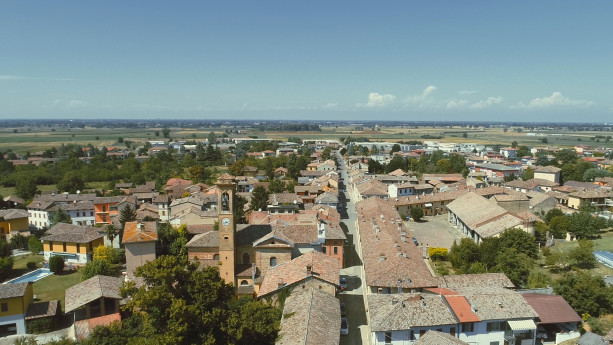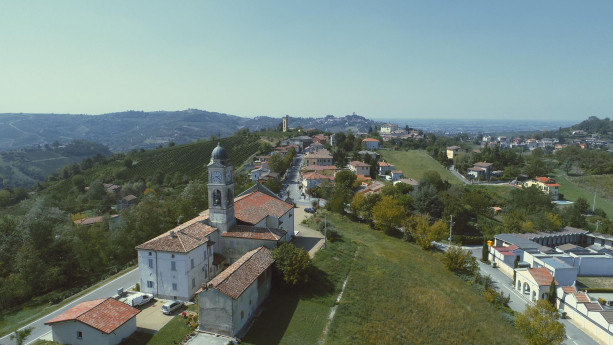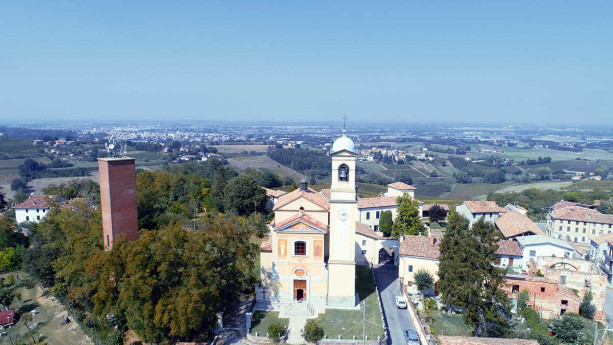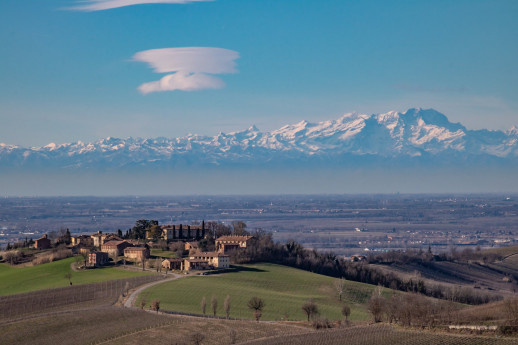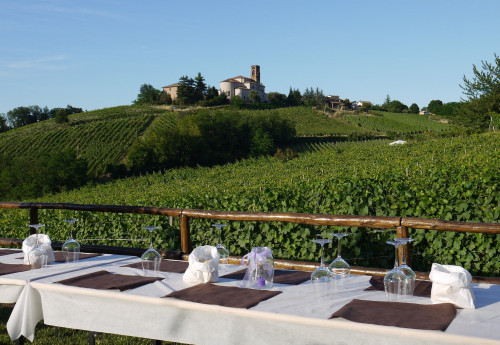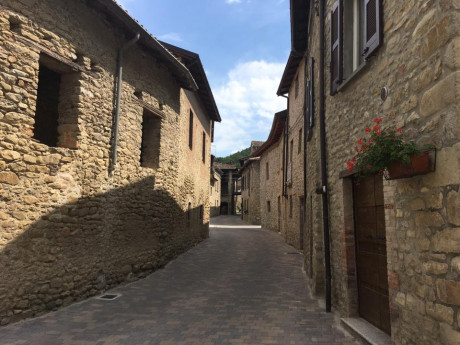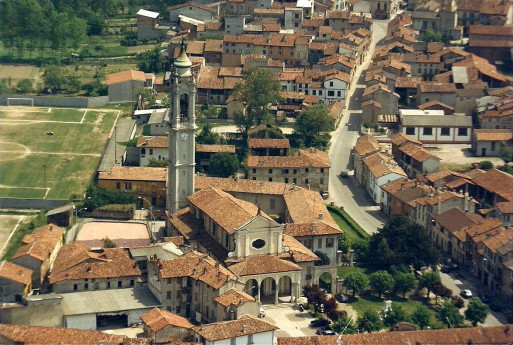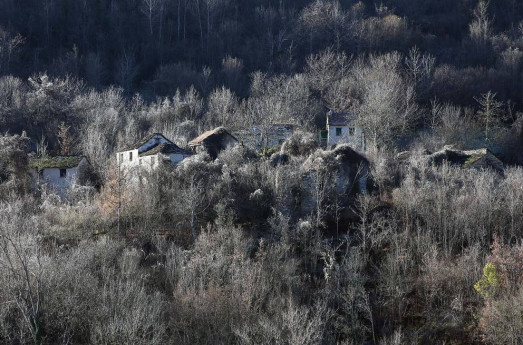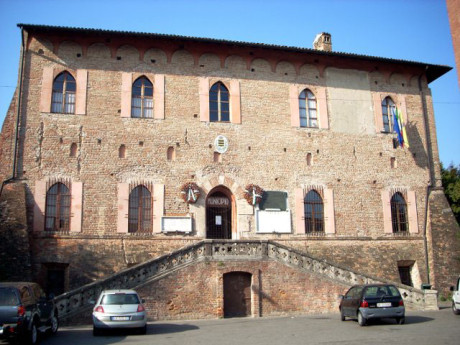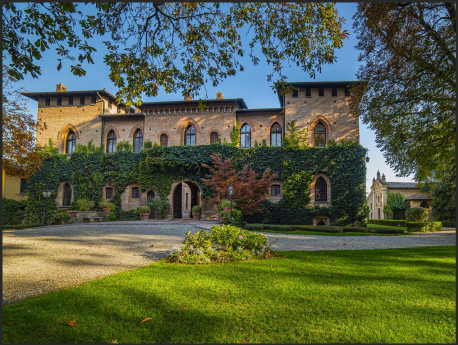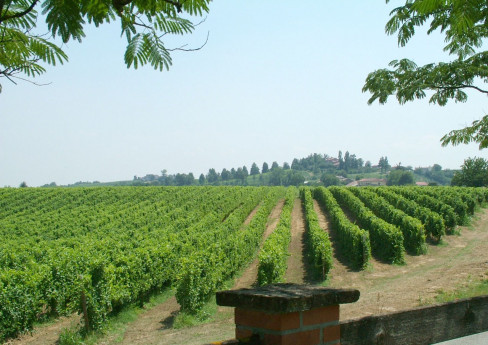Redavalle
The current Redavalle is the heir of an older settlement, San Martino in Strada. In the area, there existed a Roman settlement mentioned in ancient itineraries as Cameliomagus or Comillomagus (forms resulting from the careless writing of a probable Camillomagus). The itinerary distances would suggest Broni as the location, but it is certain that numerous Roman artifacts have been found in Redavalle, which proves the Roman origin of San Martino in Strada, whether it corresponds to Camillomagus or not. Like many ancient centers that survived the barbarian invasions, it had its own parish, dependent on the diocese of Piacenza, whose name (San Martino in Strada) replaced the ancient name of the location. San Martino came under Pavia's dominion in 1164, when it was probably a dependency of Broni; it was, however, equipped with a castle, which was burned by the forces of the Lombard confederates during the wars against Frederick I Barbarossa. San Martino in Strada, located slightly to the east of Redavalle, never recovered from the disaster. It was then that Redavalle (so named in 1250), situated on the western edge of the San Martino municipality, began to grow in importance, eventually absorbing the entire population of the old center. Around 1560, the San Martino parish was abandoned, and the archpriest settled at the chapel of San Rocco in Redavalle (which took the name of San Rocco and San Martino). Redavalle was part of the Broni fief, which from the 13th century belonged to the Beccaria family and, from 1536 until the end of feudalism (1797), to the Arrigoni family of Milan. As mentioned, Redavalle stood near the western boundary of the municipality, so much so that part of the town extended into the adjacent municipality of Santa Giuletta; this anomaly was resolved in 1866 with the transfer of a section of Santa Giuletta’s territory to Redavalle (called the Rile fraction). Redavalle: a small village at the foot of the hills of Oltrepò Pavese, just a couple of minutes by car along the Via Emilia, but a place like any other only on road maps. This spot, halfway between the cities of Casteggio and Broni, now houses a population of just over 1,000 souls: it once represented the most important center on the route between Iria (Voghera) and Placentia (Piacenza). Its origins date back to the pre-Roman period; its founders and first inhabitants were the Ligurian and Celtic populations who contested dominion over the territory before the Roman conquest at the end of the 3rd century BC: Cameliomagus was its name, as reported on the Tabula Peuntiger, a kind of road map depicting Roman itineraries, major centers, and post stations. Among these, at 17 Roman miles from Iria and 25 from Placentia, the settlement of Cameliomagus is listed, stretching its boundaries up to the present-day villages of Manzo (Santa Giuletta) and Ca' del Piano (Cigognola). The center is to be located at the foot of the hills, in the territory of Redavalle and Cassino Po, scattered with inns, stables for changing horses, taverns, shops, and patrician villas, of which unfortunately no large remains remain: some inscriptions, many coins, urns, lamps, and funeral furnishings, mostly found in the Gragnolate necropolis, the Vacca d'oro and Bruciati estates, and during 19th-century excavations at the demolished Bornaghi kiln. Present in several lower hill areas of Redavalle, along which the Postumia road ran, are fragments, tiles, bricks, and other evidence of the Roman presence, which was constant and prosperous until the decline of the Empire. Due to its strategic position, ancient Cameliomagus suffered, starting at the end of the 4th century AD, a progressive impoverishment due to the barbarian invasions and the economic and political instability of those centuries. The slow Christianization of the first millennium brought significant historical, religious, and architectural changes to ancient Redavalle, but only a few remains are left, the first of which is the ruined pillar at the entrance to the town coming from Broni, near the junction with the road leading to Pietra de' Giorgi. This pillar, commissioned by Archpriest Primo Andrea Sterpi in 1724, was erected to commemorate the Pieve of San Martino in Strada, probably built in the 9th-10th century AD, which for several centuries gathered in its divine worship the parishes and populations of neighboring towns, including Cigognola, Pietra de' Giorgi, Barbianello, Mornico Losana, and Santa Giuletta. It was an important Pieve, with structures to accommodate travelers and pilgrims on the Roman Way, whose power, however, was weakened over the centuries by plagues and the neglect of its rulers, leading to the abandonment and decay of the church, replaced for services by a chapel in the town center dedicated to San Rocco, later expanded in the early 18th century by architect Veneroni into the current structure, masterfully restored in the last decade of the last century. The rule of the Franks, followed by the local feudal dominations and the power of the individual municipalities, marked a dark period in Redavalle’s history: it is unfortunately remembered for the burning of the town's castle in 1164 by the people of Piacenza and Cremona, fighting against the city of Pavia, allied with Frederick Barbarossa, an event engraved in popular tradition and depicted on the town’s coat of arms. In the following centuries, after the Renaissance dominations of the Visconti-Sforza, came that of the Spanish and, from 1713, the Austrians. The village, which gradually formed around the aforementioned chapel, was embellished in the 17th century by the construction of two chapels at the entrance to the town, now restored and dedicated to the Madonna and the memory of the Fallen. In 1743, with the Treaty of Worms, the territory of Redavalle, along with all of Oltrepò Pavese, passed under Savoy rule, later becoming part of the province of Pavia in 1861. Source: Comune di Redavalle PHOTO: Portale www.visitoltrepo.com

